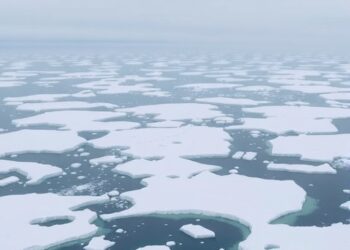More than 100,000 oil and gas wells across the western U.S. are in areas burned by wildfires in recent decades, a new study has found, and some 3 million people live next to wells that in the future could be in the path of fires worsened by climate change.
More than 100,000 oil and gas wells across the western U.S. are in areas burned by wildfires in recent decades, a new study has found, and some 3 million people live next to wells that in the future could be in the path of fires worsened by climate change.
Researchers from the University of California, Berkeley, said their analysis, which was published last week in the journal One Earth, is the first to examine historical and projected wildfire threats on oil and gas facilities in the U.S. While the public health effects of scorched and damaged drill sites are unclear, researchers said the study is a necessary step toward understanding the potential compound hazards and could help inform policy about future drilling.
“Most of the oil wells in California are currently in wildfire threatened areas, and a lot of people live in those areas because of the history of oil and gas development in this state,” said David J.X. González, an assistant professor of environmental health sciences at UC Berkeley’s School of Public Health. “The same issues that have been with us historically are still with us, and it looks like they might lead to new environmental justice issues that haven’t really been explored.”
González, the paper’s first author, pointed to Los Angeles and Kern counties as populated areas plumbed for oil and gas extraction and also at high risk of burning now or in the near future. In the past, fires in oil and gas fields not related to wildfires have caused blowouts, and leaks from gas storage tanks in Los Angeles have resulted in explosions that damaged buildings. Near Bakersfield, dozens of wells have been found to be leaking natural gas, some at explosive levels.
Since 1984, almost 350,000 people across the western U.S. have lived within 1 kilometer of a well that was inside a burn zone, researchers found. Asian, Black, Hispanic and Native American people have faced disproportionately high exposure to those wells affected primarily by a handful of megafires in California, Texas and Oklahoma.
Across the West today, nearly 3 million people live within 1 kilometer of a well that is projected to be in an area with an increased risk of burning in the coming decades. What’s more, the number of wells in high-risk wildfire areas is predicted to nearly double by the end of the century.
That means more wells are being drilled in more areas expected to burn.
“I don’t want to say, ‘The sky is falling.’ But there was more of an impact than we thought there was going to be,” González said. “When we put everything together, it starts to look like this is a problem that hasn’t really been looked at in the past but has been worsening and will likely continue to worsen. It’s concerning, particularly for people living near leaking wells.”
While the confluence of fire and drilling isn’t meant to be alarmist, González said it is an example of compounding factors that hold unexplored, and potentially significant, health effects.
González’s past research explores the public health impacts of oil and gas development, particularly for marginalized groups that suffer disproportionate adverse health effects. When a 2021 fire in Colorado burned near an oil and gas operation, he and his colleagues pondered how often drill sites were blackened, if this could be a common occurrence in the future and how concerning the effects might be.
The team compiled and examined wildfire maps from 1984 to 2019 and analyzed oil and gas drilling records. By lining up where drill sites overlapped with burn areas, and adding population data, the researchers estimated how many people lived near affected wells.
While the health effects stemming from oil and gas wells are becoming increasingly known, there are minimal, if any, studies on the health effects of fires that burn oil and gas facilities. In densely populated areas where buildings burn in supercharged fires, oil and gas operations could complicate fire response efforts, González said.
There are existing cautionary tales. Infernos like the 2018 Camp Fire in Northern California caused volatile organic compounds to leach from plastic pipes into the drinking water system.
Many toxic chemicals are already in use in oil fields, González said. Little is known about what happens when those chemicals combine in smoke plumes that already pose serious health risks every year.
“We need additional protections in place to make sure that, as wildfires continue to come, we are protecting the places and the people near these industrial activities,” González said.
Setback rules that increase the distance between wells and places people live, work or attend school would be an effective intervention from a public health perspective, González said. Additionally, public land managers should consider the long-term health effects and potential hazards of permitting wells in fire-prone areas.
“With an issue that we know is going to worsen as climate change progresses,” González said, “we have an opportunity to take proactive action to prevent future harms.”
Journal
One Earth
Article Title
Wildfires increasingly threaten oil and gas wells in the western United States with disproportionate impacts on marginalized populations
Article Publication Date
21-Jun-2024




